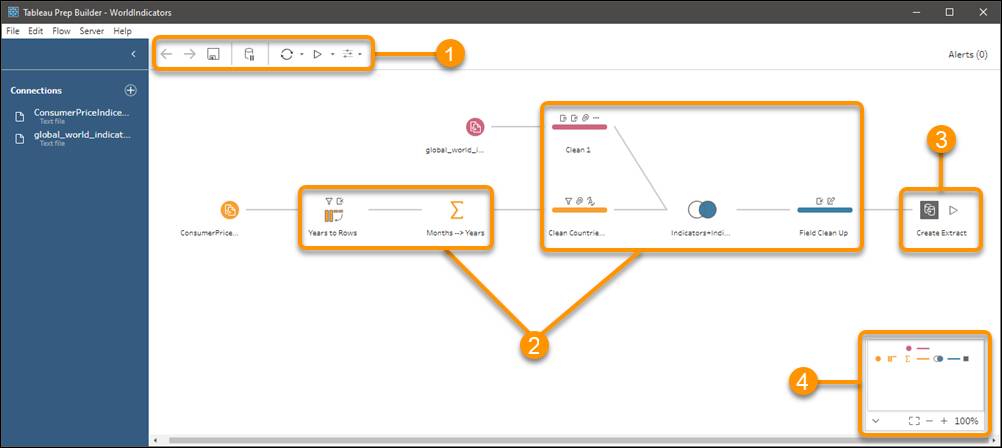


This option is not available for all data sources and may also impact performance. The database looks at every row and returns a sample. The random sampling happens on the database level, returning the number of rows requested. By default, Tableau Prep will calculate the optimal number of rows to return depending on the total number of fields in the set and the data types of those fields. this does not necessarily mean the top 1,000 rows in the database). Another caveat is that using a fixed number of rows will return what the underlying database uses as criteria for the fastest way to return the rows requested (i.e. You can increase the number of rows or include all the data, but be aware this could slow down the performance. Go back to the input step and adjust the number of rows for the sample. Increase the sample size of your data.If a sample doesn’t help you solve your data prep task, here are some things you can try:
#TABLEAU PREP FLOW FULL#
There may be times where you want to see the full data set and Tableau Prep lets you do either. When you connect to a large data set, you’ll probably want to limit it to a sample of the data to increase the speed of your data prep process and to optimize performance. It is often necessary to pull in outside data sources to get the complete story. For example, you might analyze student test scores in your district and want to see how socioeconomic statuses play a role, so you integrate census data. Ask yourself: Is the data in a single table or in multiple tables in a single database? You may need to combine multiple databases to get to the root of your questions-or if you need a more robust view, you may need to bring in an external data source. Once you can access the necessary data, you'll need to determine where it all lives. To see more about how data should be structured for analysis in Tableau Desktop, visit the online help page. For example, do you even have the right permissions to access a given data source and is it in the right shape? In other words, when you bring it into Tableau, can you do the analysis you want? You’ll need to address both of these questions before you even start the preparation process. There are some basic considerations when it comes to this question. Reference Materials Toggle sub-navigation.Teams and Organizations Toggle sub-navigation.Plans and Pricing Toggle sub-navigation.


 0 kommentar(er)
0 kommentar(er)
